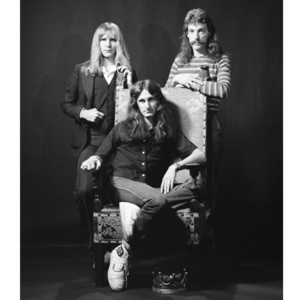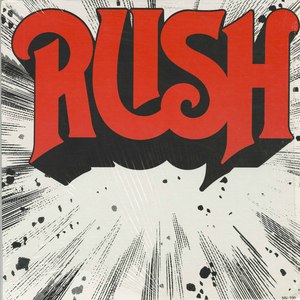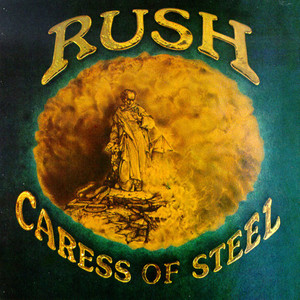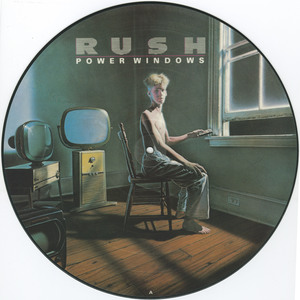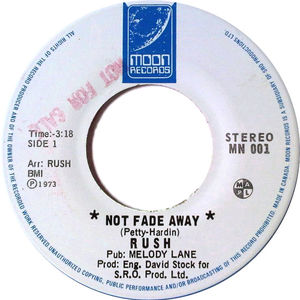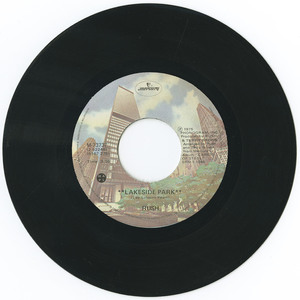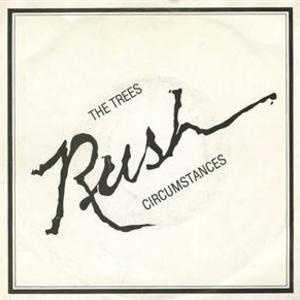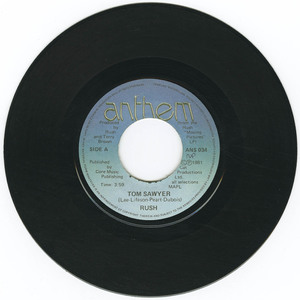Rush
Websites:
https://www.thecanadianencyclopedia.ca/en/article/rush-emc, https://www.rush.com/
Origin:
Willowdale, Ontario, 🇨🇦
Biography:
This rock trio was formed in 1968 in Toronto by the guitarist Alex Lifeson (b Zivojinovich, in Fernie, BC, 27 Aug 1953), the singer, bass guitarist and (later) keyboard player Geddy Lee (b Gary Lee Weinrib, in Toronto, 29 Jul 1953), and the drummer John Rutsey (b 1953, d Toronto 11 May 2008).
Rush
Rush. This rock trio was formed in 1968 in Toronto by the guitarist Alex Lifeson (b Zivojinovich, in Fernie, BC, 27 Aug 1953), the singer, bass guitarist and (later) keyboard player Geddy Lee (b Gary Lee Weinrib, in Toronto, 29 Jul 1953), and the drummer John Rutsey (b 1953, d Toronto 11 May 2008). Initially performing a wide variety of British and US rock cover songs, by 1969-70 the band began to write original songs influenced by the British "proto-heavy metal" band Led Zeppelin. Lee contributed the piercing, high, countertenor vocals that typified Rush's sound from the early 1970s to the early 1980s, and Lifeson contributed a riff-based, though also melodic, electric guitar style.
The trio performed in high school auditoriums and nightclubs in Ontario before recording its self-titled debut album in late 1973 and releasing it in Canada in January of 1974 on the band's own Moon label. Rutsey was replaced by the drummer-lyricist Neil Peart (b Hamilton, Ont, 12 Sep 1952) in time for an album deal with Mercury Records and the trio's first US tour in late 1974. Neil Peart's "semi-literary" fascination with Anglo-American literature (such as literary travelogues and science fiction) included an interest in the individualist writings of Ayn Rand that inspired certain songs from 1975 to 1982. Around the same period, when it co-produced its music with Terry Brown, the trio often fused elements of progressive rock (such as complex time signatures and virtuosity) with its early emphasis on heavy metal, but its adaptive/evolutionary style later involved elements of post-punk, synth-rock, and alternative rock.
From 1974 to 1976, Rush often opened in the US for Kiss, Aerosmith and other hard-rock bands, but by 1975-76 it had started to headline concerts in the US and Canada. By the end of the decade its usual venues were sports arenas and outdoor stadiums - eg, Maple Leaf Gardens, the CNE Grandstand, and their US equivalents (Madison Square Garden, the Nassau County Coliseum, etc). Rush made its first European tour in 1977 (returning in 1981, 1983, 1988, 1992, 2004 and 2007) and also performed in Japan in 1984, in Mexico and Brazil in 2002, and in Puerto Rico in 2008. In its early years, the trio gave more than 200 performances annually (often in smaller venues), but its dozen tours from 1980 to 2004 each consisted of about 70 concerts (in larger venues). The Canadian bands April Wine, Chilliwack, Max Webster, the Pat Travers Band, Streetheart, Payola$, Tom Cochrane and Red Rider, Wrabit, FM, Chalk Circle and Voivod have all served as opening acts for Rush, as have dozens of US and British artists.
The trio's success has come largely through its 30 albums which collectively have sold more than 43 million copies internationally, and through its concerts. The band's best-selling (and, arguably, best) album, Moving Pictures (1981), has sold over four million copies in the US. All three members - Peart in particular - came to be highly regarded for their technical skills, which are given full play in live performance. They also worked on solo projects in the 1990s, and Peart wrote several books, including Ghost Rider: Travels on the Healing Road (2002), after his daughter and spouse died in 1997 and 1998, respectively. The band was moderately successfully as a Top 40 act in Canada, but "New World Man" (1982) was the band's only Top 40 hit in the US. However, many of its songs have enjoyed considerable success on album-oriented rock formats in Canada and the US. Rush is equally known for its extended works (1975-81) - eg, "By-Tor & The Snow Dog," "2112," "Xanadu," "Cygnus X-1," "Hemispheres," the instrumental "La Villa Strangiato," and "Natural Science" - but it moved completely away from the extended format in its new music from 1982 to 2002.
A substantial portion of Rush's "hardcore" fans comprise hundreds of thousands of amateur and professional musicians, ranging from progressive/hard rock drummers, bassists, and keyboardists to classical violinists to death metal guitarists and vocalists. Four Rush tribute albums, reflecting all of these styles, appeared between 1996 and 2005. By comparison, the band has met with, at best, mixed reception among rock critics. Nonetheless, Rush has won numerous music industry awards in Canada, such as Juno Awards for best new band in 1975, and group of the year in 1978 and 1979. Presto (1989) won the inaugural Juno for hard rock/metal album of the year in 1991, followed by Roll the Bones (also for hard rock/metal album) in 1992, and music DVD of the year for Rush in Rio (2004). CRIA identified Rush in 1990 with Bryan Adams and k.d. lang as the "artists of the decade" for the 1980s. The band also played at the post-SARS mega-concert Toronto Rocks (2003) and for the post-tsunami fundraiser Canada for Asia (2005). In 2010 Rush was inducted into the Canadian Songwriters Hall of Fame.
Rush seemed to ride a wave of renewed interest at the dawn of the new decade as the DVD from its successful tour in support of its gold-certified Snakes & Arrows album was nominated for a Juno in 2010, the excellent documentary Rush: Beyond The Lighted Stage won a Juno in 2011 and the Rush: Time Machine 2011: Live in Cleveland DVD received a 2012 nomination. The group toured ambitiously in support of its 2012 Clockwork Angels album, which debuted at number one in Canada and number two in the United States. A novelization of the album by science fiction writer Kevin J. Anderson was published that same year, when Rush also received the Governor General's Performing Arts Award for Lifetime Artistic Achievement. Clockwork Angels went on to win the Rock Album of the Year award at the 2013 Juno Awards in Regina.
Many thought the honour was long overdue, but Rush was finally inducted into the Rock and Roll Hall of Fame in 2013 after selling more than 40 million albums worldwide and performing in front of millions through numerous high-grossing tours. Rush's sales statistics place it third after The Beatles and The Rolling Stones for the most consecutive gold or platinum studio albums by a rock band in the US.
-Steve McLean and Durrell Bowman
Geddy Lee is a Canadian musician and songwriter, best known as the lead vocalist, bassist, and keyboardist for the Canadian rock group Rush. Lee joined Rush in September 1968, at the request of his childhood friend and guitarist Alex Lifeson.
An award-winning musician, Lee’s style, technique, and skill on the bass guitar have inspired many rock musicians. In addition to his composing, arranging, and performing duties for Rush, Lee has released a solo record, My Favourite Headache, in 2000.
Along with his Rush bandmates — guitarist Alex Lifeson and drummer Neil Peart — Lee was made an Officer of the Order of Canada on May 9, 1996. The band also received the highest artistic honor in Canada by the Governor General in 2012, and was inducted into the Rock and Roll Hall of Fame in 2013. He was also given an honorary doctorate of Music in 2014 by Nipissing University.
Lee supports many causes through personal and band donations. He is known as an avid baseball fan and wine connoisseur.
Lee has been married to Nancy Young for over 35 years and they have 2 children.
Aleksandar Živojinović (born August 27, 1953) better known by his stage name Alex Lifeson, is a Canadian musician, best known as the guitarist of the Canadian rock band Rush. In the summer of 1968, Lifeson co-founded the band that would become Rush with former drummer John Rutsey.
In early 1971, Lifeson made his film debut as himself under his birth name in the Canadian documentary film Come on Children by Allan King. The film enjoyed a resurgence when decades later a clip was featured in the documentary Rush: Beyond The Lighted Stage, that featured Alex having a teenage argument with his parents on the merits of leaving high school to pursue his dream to play guitar as a career.
For Rush, Lifeson plays electric and acoustic guitars as well as other stringed instruments such as mandola, mandolin, and bouzouki. He also performs backing vocals in live performances, and occasionally plays keyboards and bass pedal synthesizers. Instrumentally, Lifeson is regarded as a guitarist whose strengths and notability rely primarily on signature riffing, electronic effects and processing, unorthodox chord structures, and a copious arsenal of equipment used over the years that has befitted him the title by his bandmates as “The Musical Scientist”.
The bulk of Lifeson’s work in music has been with Rush, although he has contributed to a body of work outside of the band as a guitarist and producer. In addition to music, Lifeson is a painter, an avid golfer, a licensed aircraft pilot, and part-owner of The Orbit Room (a bar and restaurant located in Toronto, Canada). He is also known for his comedic virtues, which have been highlighted in various cameo film roles over the years including one in the Canadian-cult mockumentary series The Trailer Park Boys. Along with his bandmates Geddy Lee and Neil Peart, Lifeson was made an Officer of the Order of Canada on May 9, 1996 and the highest artistic honour by receiving the Governor General’s Award in 2012. Lifeson ranks third in the Guitar World Readers poll of 100 greatest guitarists and is also included in Rolling Stone’s 100 Greatest Guitarists of All Time.
In addition to charities supported by the band, Lifeson continues to give back to charities and causes close to his heart which have included Casey House, The Kidney Foundation as well as the Domenic Troiano foundation that funds guitar scholarships. Lifeson has been married to his highschool sweetheart Charlene for 40 years and has 2 sons and 2 grandsons.
Neil Peart was born September 12, 1952, in Hamilton, Ontario, Canada, and first lived on the family dairy farm, near Hagersville. After the family moved to nearby St. Catharines, Neil began drum lessons at age thirteen, studying with local teacher Don George, then played in a succession of rock bands. Early influences were Gene Krupa, Keith Moon, Mitch Mitchell, Ginger Baker, Michael Giles, John Bonham, and Michael Shrieve. At eighteen, he moved to London, England, a time about which he has said: “I was seeking fame and fortune, and found anonymity and poverty. But I learned a lot about life.”
Returning to Canada in 1972, Neil began working at his father’s farm equipment dealership, playing part-time in local bands. His influences then included Phil Collins, Bill Bruford, and Billy Cobham. In July, 1974, he auditioned for an unknown Toronto band, and joined Rush on the eve of their first American release and tour.
Neil appeared on Rush’s second album, Fly By Night, in 1975, contributing most of the lyrics–as he would throughout their career. It was Rush’s fourth album, 2112, released in 1976, that brought the band their first measure of success. They gradually built on that modest popularity with A Farewell to Kings, Hemispheres, and Permanent Waves, then cemented their classic rock status with the enduring favorite, Moving Pictures, in 1981. Along the way, Rush earned a reputation for their elaborate live shows and became a perennially popular touring band. Over the years their shows elevated steadily in both production and musical values.
Neil has long been celebrated by other drummers in polls and cited influences, and won numerous awards from the drum magazines, for his recorded work, live performances, and overall musicianship. The drum solos he performed during the Rush tours were legendary. He and his bandmates are Officers of the Order of Canada, the country’s highest civilian honor — as well as recipients of the Governor General’s Award, the country’s highest artistic honour. Peart and his bandmates were inducted into the Canadian Songwriter Hall of Fame (2010), the Rock and Roll Hall of Fame (2013), and the Percussive Arts Society Hall of Fame (2020).
In 1994 he produced a tribute album to Buddy Rich and big-band jazz, called Burning For Buddy: A Tribute to the Music of Buddy Rich. Encompassing two volumes, it features many of the most prominent drummers of the day. Never resting on his laurels, Neil began to study formally again in the mid 90s with Freddie Gruber, and then again with Peter Erskine in 2008.
Neil released two instructional DVDs, A Work in Progress (1996) on the subject of composing and recording drum parts, and Anatomy of a Drum Solo (2005.) In 2011, Hudson Music released Taking Center Stage: A Lifetime of Live Performance, on the subject of drumming live for more than four decades.
Neil was also an accomplished writer. He published six nonfiction books: Far and Wide: Bring that Horizon to Me! (2016), Far and Near: On Days Like These (2014), Far and Away: A Prize Every Time (2011), The Masked Rider: Cycling in West Africa (1996), Ghost Rider: Travels on the Healing Road (2002), Traveling Music: The Soundtrack to My Life and Times (2004), and Roadshow: Landscape With Drums, A Concert Tour by Motorcycle (2006). His final book, “Silver Surfers,” is being published posthumously by Insight Editions in 2023.
He also co-authored three novels with science fiction author Kevin J. Anderson based on the steampunk, fantasy universe of Rush’s last studio album—Clockwork Angels, Clockwork Lives, and Clockwork Destiny (plotted during his last years, published posthumously, and released on June 14, 2022); the two also wrote the dark fantasy novella Drumbeats, inspired by Neil’s travels in Africa.
Following the end of the R40 tour, Neil announced his retirement from music and settled into a quiet home life with his wife Carrie and their beloved daughter Olivia. He enjoyed this time writing, driving his classic cars, volunteering at Olivia’s school, spending time with friends and family, and especially enjoying time at his favourite place in the world, his lake house in Quebec.
Sadly, only one year after retirement Neil was diagnosed with gioblastoma, an aggressive form of brain cancer. He passed away at home in Santa Monica three and half years later on January 7, 2020.
